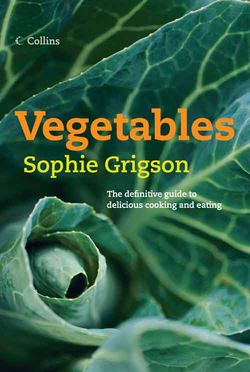Читать книгу Vegetables - Sophie Grigson, Sophie Grigson - Страница 33
COOKING
ОглавлениеI like my parsnips peeled, but with organic ones this is not strictly necessary, especially if you have very small parsnips that can be cooked whole. What is necessary with sizeable parsnips is the disposal of the woody core. Cut the fatter parts of the parsnips in quarters lengthways and lop out the white heart – another candidate for the compost bin – before cooking.
Most recipes for parsnips begin with a spell in boiling water (just long enough to soften, but not so long that they go mushy) but after that they will almost certainly demand something more. ‘Kind words butter no parsnips’ is an old saying, distinctly out of vogue in the 21st century when kind words are considered essential to the development of children, dogs and houseplants. But way back when it was heard tripping from the tongues of the wise and wealthy, toughness was an altogether more praiseworthy quality for training the young and the wayward. The point here is the essential buttering of those parsnips. There is no debate on this issue. Parsnips, lovely vegetables that they are, are magically enhanced by lashings of butter or good oil, or dripping, or cream: butter on boiled parsnips, cream and/or butter in mashed parsnips, goose fat or oil and a touch of butter for roast parsnips.
The soft, starchy nature of parsnips makes them candidates for any sort of mashing or puréeing. Straight parsnip mash is perhaps too intensely sweet for most tastes – I find it nicer mashed with, say, half the volume of cooked potatoes, as well, of course, as butter, milk or cream, salt and a heavy dose of freshly grated nutmeg, or a few pinches of cinnamon. Parsnip and potato mash makes a fine topping for old-fashioned cottage, shepherd’s or fish pie.
Alternatively, you could purée the parsnip with plenty of thick béchamel sauce, again softening the total parsnip essence. This mixture can be turned into a gratin of sorts, by mixing in an egg or two, spreading out thickly in an ovenproof dish, scattering the top with freshly grated Parmesan mixed with equal quantities of breadcrumbs plus a few dots of butter and then sliding the whole lot into a hot oven to cook until browned and bubbling. Very good indeed.
Parsnip soups are terrific too, made along classic soup lines, pepped up with curry (see recipes) or with fresh root ginger, cut half in half with apple or pear, or aromatised with lemon thyme. Croûtons or crisp grilled bacon or pancetta are excellent with parsnip soups.
My mother occasionally treated us to Saratoga chips. ‘Saratoga chips’ was the original name for potato crisps, supposedly invented by a disgruntled chef in the town of Saratoga, but my mother’s Saratoga chips were proper British chips, made with parsnip. Great name, great treat. Parboil ‘chips’ of parsnip, being really, really attentive so that they don’t overcook to a pap. Drain well and dry, then deep-fry until golden brown and serve sprinkled with grains of salt. So good. Parsnip fritters are pretty appealing too – again parboil pieces of parsnip, then dip into either a beer batter or a tempura batter and deep-fry until crisp and golden brown. Serve with wedges of lemon, and salt flavoured with crushed toasted cumin. For a smarter starter fritter, cube par-cooked parsnip and stir into the beer batter along with roughly chopped small shelled prawns or shrimps, then fry spoonfuls in hot oil until golden brown.
I often add parsnips to stews, just 20 minutes or so before the stew finishes cooking so that they have time to absorb some of the flavours, but not so long that they collapse. They are good in a chicken stew, but even better in an earthy beef stew.
And finally, try baking a parsnip cake – replace the carrots with grated parsnips in the recipe on page 28. You’ll be amazed at how good the cake is, and you can keep your family and friends guessing the mystery ingredient for hours.
